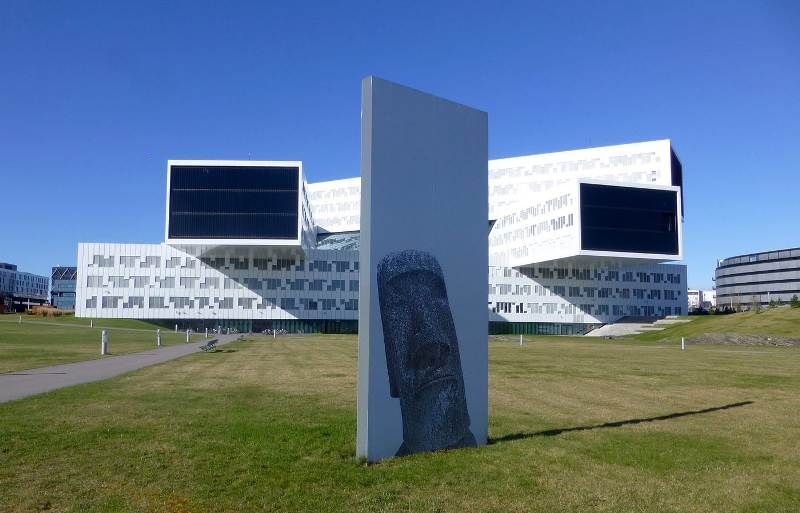File:Statoil (Equinor ASA) headquarters in Norway.jpg
Statoil_(Equinor_ASA)_headquarters_in_Norway.jpg (800 × 513 pixels, file size: 75 KB, MIME type: image/jpeg)
The headquarters of Statoil, outside Oslo. Credit Andrew C. Revkin
Elon Musk answering a question at a Future of Transportation conference in Oslo, Norway on April 21, 2016
As reported by Andrew Revkin
····························
Audience member:
"In Norway, our income is based on oil and gas. Now we’ll be drilling for more oil and gas in the Bering Sea to preserve the welfare state. I would like to hear your point of view on this."
Musk:
"There is actually a necessary short- to medium-term role for oil and gas because sustainable power generation and electric vehicles are still at the early stage. It takes time to scale up and get to high volumes. The real thing that’s important for hydrocarbons is to correctly price the un-priced externality of the impact on the environment. Market mechanisms work very well when the pricing is correct. If the pricing of oil and gas does not include the environmental impact that is a de facto subsidy.
I’m disinclined to vilify the oil and gas industry because if we didn’t have them there would be economic collapse and people would be starving to death. It is very necessary in the short term. It’s just that we need to be taking the steps to accelerate the transition to a sustainable energy economy in Norway and throughout the world as quickly as possible. The faster we do that, the better off the world will be and the lower will be the long-term environmental impact."
·······························································
More on Externalities @GreenPolicy360
More re: Equinor (formerly Statoil)
················································································································
Long-time environmental news reported Andy Revkin later added the following comment as he reflected about the 'Anthropocene' and challenges of energy and transitioning from fossil fuels in transportation...
"There was some irony in the stroll each day between our hotel and the Nansen Institute. It took us along the shore in front of a giant Jenga-block scramble of horizontal white towers that belong to Statoil. Norway’s mostly state-owned oil company has contributed substantially not only to Norway’s economy but also to global climate change. Even as Norway was adding incentives for drivers to buy electric vehicles to take advantage of ample domestic hydro-electric power, the company announced plans to expand drilling in the Barents Sea to boost fossil-fuel exports. One got the impression that decisions made in that building would have a bigger impact on world affairs than any conclusions we produced."
"There was a second layer of irony there on the windswept shores of the fjord. The grassy stretch along the sinuous path was also a sculpture park. A vertical slab rose from the grass directly in front of the Statoil building, imprinted with an image of one of Easter Island’s moai — the haunting stone figures carved at the potent pinnacle of the great, but vanished, Rapa Nui civilization."
○
File history
Click on a date/time to view the file as it appeared at that time.
| Date/Time | Thumbnail | Dimensions | User | Comment | |
|---|---|---|---|---|---|
| current | 13:13, 19 April 2023 |  | 800 × 513 (75 KB) | Siterunner (talk | contribs) |
You cannot overwrite this file.
File usage
The following page uses this file:
- Air Quality
- Atmospheric Science
- Clean Air
- Climate Change
- Climate Policy
- Earth360
- Eco-nomics
- Electric-Powered Transportation
- EOS eco Operating System
- Energy
- Environmental Full-cost Accounting
- Externalities
- Europe
- European Union
- Fossil Fuels
- Green Graphics
- New Definitions of National Security
- Norway
- Planet Citizen
- Planet Citizens, Planet Scientists
- Renewable Energy
- Solar Energy
- Strategic Demands
- Sustainability
- Sustainability Policies
- Transportation
- Whole Earth
